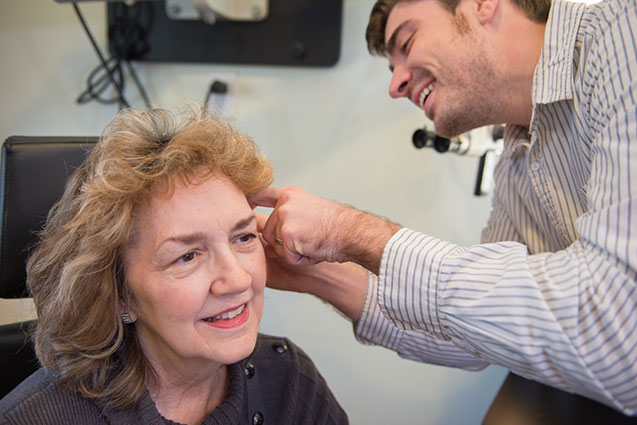Different Types of Hearing Examinations

You have finally decided to have your hearing tested, which is definitely a wonderful first step towards taking charge of your auditory health. It is important to learn about the different types of hearing tests so that you are mentally prepared for the tests and ready with any queries that you may have.
One of the most widely used hearing tests is the pure-tone audiometry. This test is an extensive test of various aspects of your hearing abilities. This test requires you to wear headphones and sit within a soundproof booth. Different types of sounds will be played via the headphones and you are to indicate by pressing a button whether or not you heard the sound. Some tests require you to raise your hand rather than press a button each time you hear the sound.
Each sound is played slowly and often involves long pauses in between sounds. The pure-tone test assesses the various levels of volume and pitch of sound that you are able to hear in. It can also indicate which levels of volume and/or frequencies you have trouble hearing in.
The next type of testing is bone conduction. This type of test does not use sound, but rather, uses vibration to examine your level of hearing. The test includes a pain-free procedure of having the audiologist place a conductor behind the ears, after which they will proceed to send vibrations via your jaw bones and ears directly into your inner ear. You actually have very little role to play in this test and it is therefore more objective than the pure-tone test.
Another common form of testing is speech testing, which examines your speech reception threshold (SRT). This basically refers to the softest level of speech you are able to comprehend more than half the time. The test can sometimes involve pre-recorded speech sounds, or your audiologist may talk directly to you in different volumes and tones. After the sound is played or read out to you, you will be asked to repeat what you heard out loud. This way your audiologist will be able to gauge the level of speech you are able to understand with ease and which levels you have difficulty comprehending due to hearing loss.
Some cases require a Tympanometry to be conducted. This type of test is generally used in order to explore any potential physical deformities (such as tumors), obstructions (such as earwax), or structural problems (such as perforated eardrums) that may exist within the ears. In this test, your eardrums will be exposed to varying degrees of air pressure to check how they respond. Even though you have no role to play in this test directly, it is best to remain absolutely still throughout the test to obtain accurate information.
This test usually involves a physical examination by an audiologist utilizing an otoscope to see whether there is any ear infection or excessive earwax. After this, a device will be inserted into the ear canal which can be uncomfortable for some people while majority report that it is painless. If there is any pain felt during this insertion process, immediately notify your audiologist.
Once the device is inserted, different ear pressures will result in movements of the eardrum which will be examined to check for any signs of hearing loss. Hearing loud noises is perfectly normal during this process. The entire test lasts for a very short time, only about 2-3 minutes for each ear.
Hearing loss comes with a host of other health problems that can severely impact your mental and physical health. It is therefore important to familiarize yourself with the above tests and get your hearing tested periodically so that you can identify the early signs of hearing loss and seek timely treatment.
